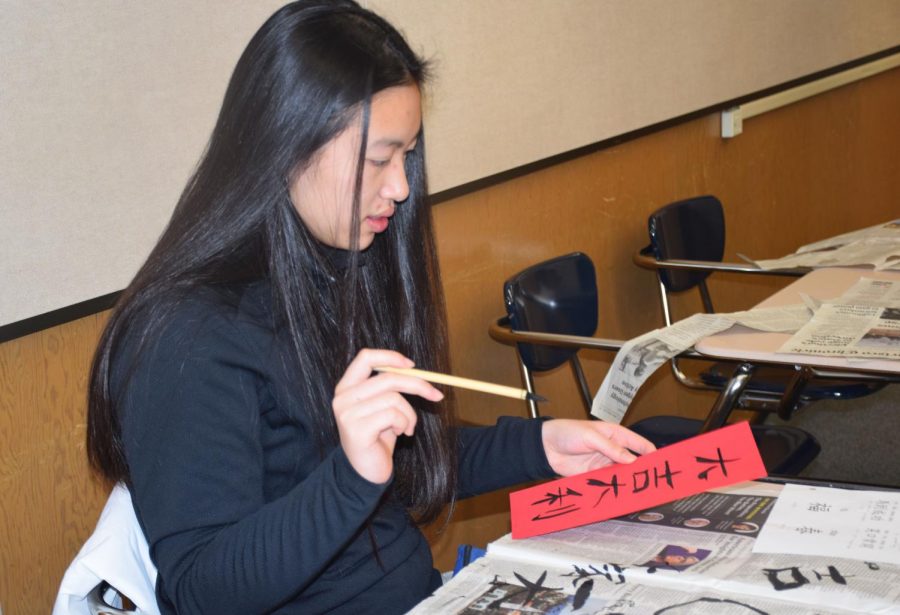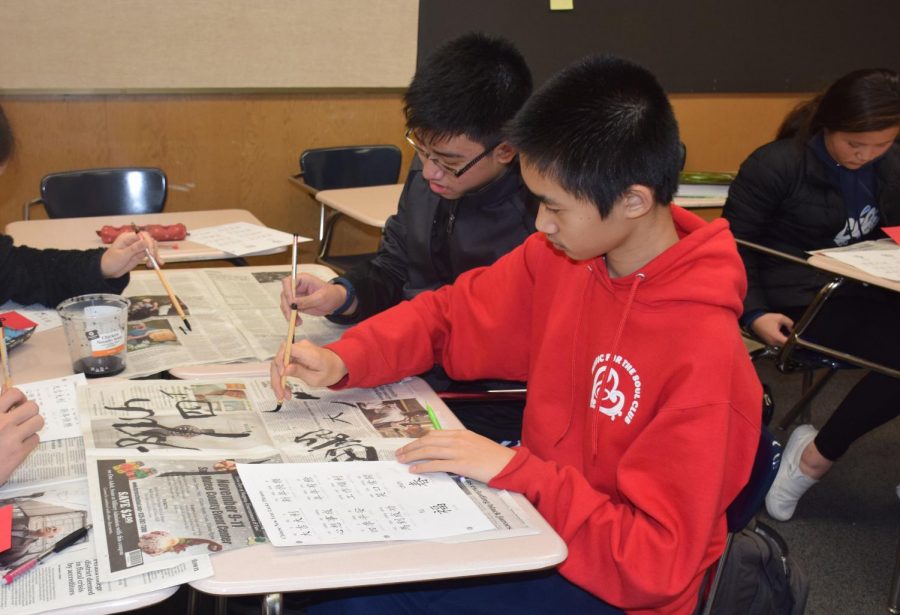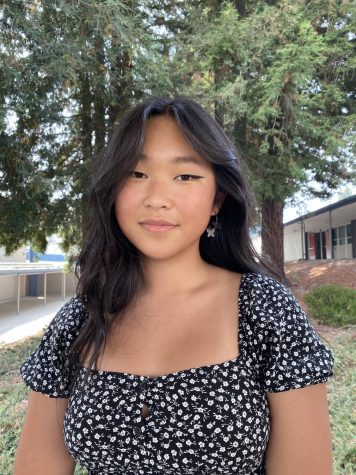Calligraphy Carries Cultural Significance
February 13, 2019
Sabrina Wun’s Mandarin classes used calligraphy lessons on February 4 to recognize the Chinese New Year.
Wun 1st demonstrated the proper way to hold and manipulate a traditional Chinese calligraphy brush. Students were then given newspapers and red paper to practice writing their own Chinese characters. Wun also taught her students how to make a chunlian, a Chinese couplet written on red rice paper that is meant to be pasted vertically on either side of a door frame for good luck.
“The traditional use of the brush is really interesting because it is actually so much harder than you think to make your characters look nice. It’s not like regular painting,” said sophomore Connie Kim.
The Mandarin classes also tried Chinese paper-cutting on February 1. Students created intricate cut-outs of fish motifs and chun, the Chinese word for “Spring.”
According to Wun, the words and animals have symbolic meaning in Chinese culture. “A fish would represent ‘abundance’ and a pig would represent the incoming ‘Year of the Pig.’ The 4-worded phrases written on our chunlian are all classical sayings Chinese people use on Chinese New Year to wish each other fortune and prosperity,” she explained.
Wun was inspired by her experience learning calligraphy as s student in Taiwan. “I thought that it would be interesting for my students to see what students in Taiwan do,” said Wun.
Wun’s Mandarin learners enjoyed the opportunity to experience a traditional activity. “It’s always better than sitting down and just studying, so I think it’s so much more fun,” said sophomore Edward Lee.
Wun believes interaction with culture is key in learning a language. “Chinese New Year is the most important celebration for Chinese people. By doing these crafts, the students are able to understand better what Chinese people do during the New Year and that really helps them in learning more about the language and the culture,” she said.
“It’s weird to say you know a lot about Chinese culture just because you read about it off a textbook, so it’s better to just try the same activities real Chinese people do,” agreed Kim.
Completed student work is now displayed on the wall of the hallway just outside Wun’s classroom in the C hall. She plans on finding a more professional calligraphy practitioner to demonstrate for her classes in the future.


